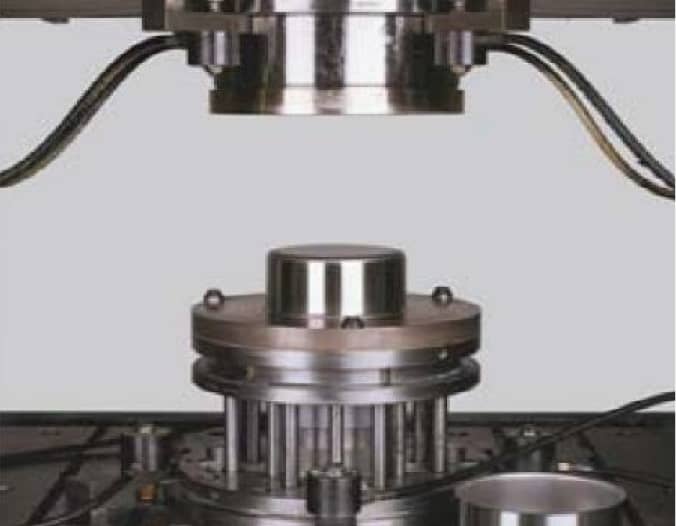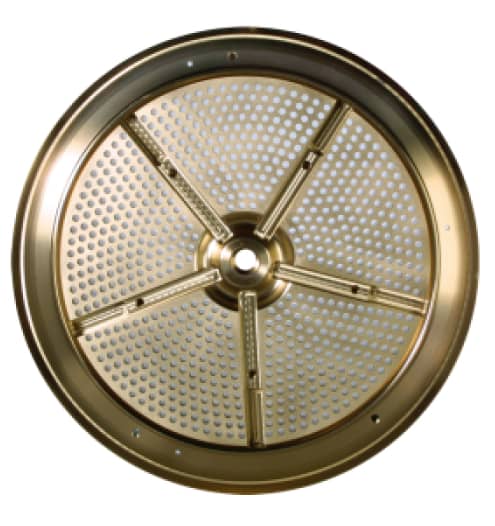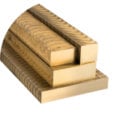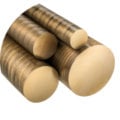Deep Drawing
Deep drawing is an important process in the field of sheet metal forming and has established itself as the strongest process in this segment. The process is used particularly frequently in the automotive industry, among others, but is also represented in many other manufacturing sectors.
A wide variety of metals, including stainless steel, aluminum, copper, brass and lead can be deep drawn. During deep draw forming, a piece of sheet metal is continuously punched into a series of drawing dies. Thanks to this process the formed part becomes much stronger than the original piece of metal.
Advantages of draw forming:
Increased strength is hereby just one of the benefits deep drawing has to offer. As the process creates parts from a single sheet of metal blank rather than multiple different blanks, unnecessary waste is avoided. This ultimately results in greater efficiency and cost reduction.
Other advantages of deep drawing include:
- Speed: No other process allows the production of a large number of parts in a small amount of time.
- Accuracy: The process results in practically no or only insignificant deviations.
- Complexity: Very complex geometries can be produced with deep drawing
Related metal forming techniques
Deep drawing is often accompanied by other related forming techniques.
Some of the most familiar and common processes include the following:
- Ironing:
Ironing is a solid forming process in which the forming force (tensile force) must be absorbed by the formed cup wall. In contrast to deep drawing, a reduction in wall thickness is desired while maintaining the same base thickness. The process is used for the production of hollow bodies with and without flanges, where the base thickness is usually greater than the wall thickness. A great example is the mass production of beverage cans.
- Curling:
Curling is another metal forming process, that aims to eliminate sharp edges and to form the edges of a metal piece into a hollow ring. Curling also increases the moment of inertia near the curled end. Typically, whenever sheet metal is firstly cut, the stock material most likely contains sharp burrs along the edges. Curling is used to smooth those edges, allowing for safe handling and also improving the strength of the edges.
- Reverse drawing
Reverse drawing is a special deep drawing technique, which is carried out on a pre-drawn shell. It is defined as «the process of inverting a shell and drawing it inside out». The process ensures that the inside of the original shell is afterward the outside of the newly drawn shell. The purpose of drawing it inside out is to remove wrinkles and to make the walls of the new shell smoother.
- Stamping
Deep drawn stamping is a cold-forming metal process that produces very small parts of 0.25 inches in diameter up to very large parts that are used in the automotive and aircraft industry. It is best used for creating components that need a series of diameters.
Drawing die and other metal forming tools
As the process of deep drawing is not always the same, there can be a lot of different tools involved.
Some of the most common ones are:
- Drawing punch
A punch is used to force a piece of sheet metal – often called blank – into a die cavity. After the blank holder moves down and clamps the blank, the drawing punch moves down and forces the blank through the drawing die.
- blank holder
The blank holder has a very important function: It controls the inward flow of metal, thus preventing wrinkles. Typically the blank holder sits on top of a pressure system or gets the required force from an external source.
- drawing die
During the ongoing deep drawing process, material from the flange is continuously forced into the die. The drawing die, also called the drawing ring, is responsible for the final design of the finished drawn product as it defines the outside diameter of a cup.
Why aluminum bronze is the best alloy for deep drawing tooling
The key to a long-lasting and efficient service life of a deep drawing tool is the material it’s made of. While conventional materials, such as cast iron or hardened steel, tend to either suffer from too much wear or have a tendency for pick-up, aluminum bronze offer numerous advantages.
To deliver the right, innovative solution exactly where it’s needed, we’ve developed AMPCO® 21, AMPCO® 22, and especially AMPCO® 25 and AMPCO® 26. These alloys combine high strength with a remarkably low resistance to friction. When it comes to deep drawing, these innovative materials are able to offset the disadvantages other conventional materials tend to suffer from.
For example, blank holders require very good sliding properties and high hardness in order to have increased wear resistance. Therefore, AMPCO METAL suggests using AMPCO® 22 and AMPCO® 25 for improved functionality. For drawing dies, we suggest AMPCO® 25 and AMPCO® 26 due to their dimensional stableness.
For help determining the alloy and the product that best meets your needs, download our technical paper “material guide for each metal forming process” or contact our technical experts.



